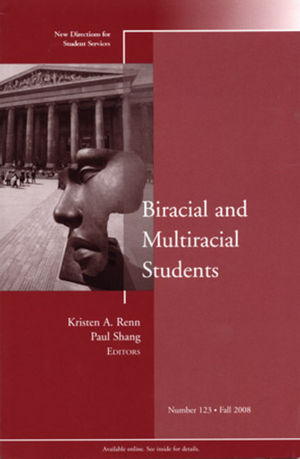“Not Half But Double”: Exploring Critical Incidents in the Racial Identity of Multiracial College StudentsPosted in Articles, Campus Life, Identity Development/Psychology, Media Archive, United States on 2012-08-01 18:25Z by Steven |
Journal of College Student Development
Volume 53, Number 4, July/August 2012
pages 524-541
DOI: 10.1353/csd.2012.0054
Angela H. Kellogg, Director of Academic Advising and Career Services
University of Wisconsin, Stevens Point
Debora L. Liddell, Associate Professor and Program Coordinator of the Higher Education and Students Affairs Program
University of Iowa
This qualitative study explored how critical incidents shape multiracial students’ understanding of race and identity at predominantly White institutions. Participants included 14 multiracial undergraduate students from two institutions in the Midwest. Four categories of critical incidents were identified from the data: (a) confronting race and racism, (b) responding to external definitions, (c) defending legitimacy, and (d) affirming racial identity. The incidents took many forms and occurred in many contexts. The majority of incidents involved interactions with other students, underscoring the influence of peers. The study also suggests implications for higher education practice and research.
In Loving v. Virginia (1967), the Supreme Court struck down restrictions against interracial marriages. Now- just four decades later, multiracial individuals represent one of the fastest growing segments of the population in the United States. According to the 2010 United States Census, 9 million (3%) of respondents indicated membership in two or more racial groups. Accordingly, a growing number of multiracial youth are enrolling in colleges and universities across the United States (Roberts, 2003). In addition to their rising numbers, multiracial students are becoming more visible and vocal as a group, evidenced by the number of multiracial student organizations, programs, and services appearing on campuses nationwide (Wong & Buckner. 2008).
Despite their growing presence, there is still much to he learned about the ways that multiracial identity is understood by students within the unique context of colleges and universities. Institutions of higher education are rich sites for studying identity (Chickering & Reisser, 1993). and provide multiracial students with ample opportunities to explore and reflect on their racial heritage, prompting them to think about their identity in different ways (Renn, 1998, 2004). Literature indicates that some multiracial college students feel pressured to choose one race, and at times have the sense of being “misperceived. misrepresented, miscategorized, and misunderstood” by faculty, staff, and peers (Cortes, 2000, p. 10). However, much of the previous college student research has been conducted with the underlying assumption that the identity processes of multiracial students are the same as for monoracial students, instead of recognizing the unique needs and developmental processes of multiracial students.
In recent decades, various theories and models have been developed to explain the identity development processes of multiracial persons. Early models of multiracial identity development were grounded in model of Black racial identity (Cross, 1971, 1991). and depicted racial identity as occurring in a series…
